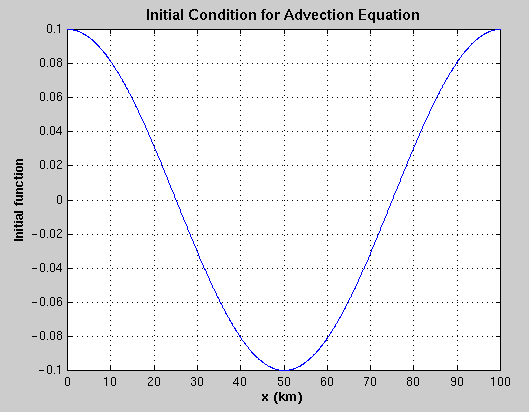



Objective: In this exercise, you will experience first-hand the trade-offs between computational stability, numerical resolution, and computer resource limitations.
Activity:
Given the one-dimensional advection equation,

Solve the equation in a 100 km domain for 5 days such that
 t /
t /  x < 1.)
x < 1.)
Initially, the amplitude of u varies from 0.1 to -0.1 m/s over the spatial domain which is
x = 0 to x = 100 km.
The figure below shows this initial condition.

Now, run this simple model yourself!
Try varying the  x and
x and  t
until you feel you have adequately resolved the spatial structure, the
CFL criterion is not exceeded, and you have achieved good efficiency (number
of computations < 1000).
Record your attempts and then fill in and submit the table below.
Do one case where the CFL criterion is exceeded.
t
until you feel you have adequately resolved the spatial structure, the
CFL criterion is not exceeded, and you have achieved good efficiency (number
of computations < 1000).
Record your attempts and then fill in and submit the table below.
Do one case where the CFL criterion is exceeded.
Return to Model Resolution Discussion